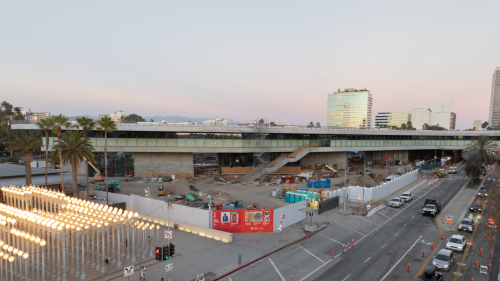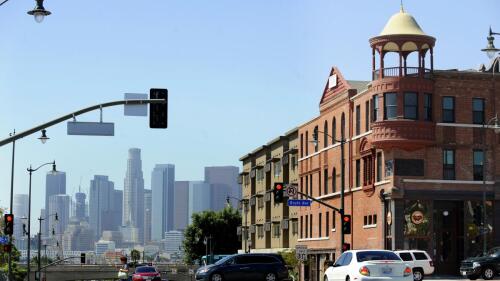Los Angeles
In the aftermath of California’s devastating January fires, which caused more than $164 billion in losses, experts are calling for urgent reforms in wildfire insurance policies. Advocates, including Darcy L. Coleman of Alagem Capital, emphasize the need for legislation that empowers the insurance commissioner to mandate incentives for fire-hardening and community mitigation efforts. They warn that, without proactive measures to address skyrocketing premiums and inadequate coverage, homeowners are sure to face heightened financial risks when disaster strikes.
Neighborhood collaboration is key to swift rebuilding
The creation of public space from unused, underused, or unequally shared linear spaces in urban areas has been happening for a long time. Major reference points in the architectural and planning worlds are Boston’s Emerald Necklace, designed by Frederick Law Olmsted (1878–1896); Freeway Park in Seattle (1972-1976); the Baltimore Inner Harbor (1963–1983); the Promenade Plantée in Paris (1987-1994); and the High Line in New York (2005–2019).
A professional self-certification program could dramatically boost the recovery effort
Experts suggest more comprehensive soil testing to ensure wildfire victims can safely return home
Despite the headwinds to rebuilding quickly and efficiently, just after the worst of the Los Angeles fires, ULI Los Angeles joined UCLA Ziman Center for Real Estate and the USC Lusk Center for Real Estate to shape a response plan, created in just six weeks.
Within days of the fires, the three institutions formed a Rebuild Advisory Committee. The Project Recovery report, produced by about 100 leading experts in land use, urban planning, and economic development, offers in-depth technical analysis and actionable recommendations to accelerate recovery and build long-term resilience in communities.
On January 7, 2025, when sparks began igniting the communities of Pacific Palisades, Malibu, Pasadena, Altadena, Hollywood, and others, the city of Los Angeles had been struggling to produce 486,379 new housing units by 2029, a number mandated by California’s Regional Housing Needs Assessment (RHNA) to address the shortfall.
Multifamily experts gathered at the University of Southern California to highlight where denser construction is creating affordability.
On September 30, 2024, green banks, community development financial institutions (CDFIs), nonprofits, tribal organizations, state and local governments, and coalitions nationwide received funding from the Greenhouse Gas Reduction Fund (GGRF), a historic $27 billion investment by the United States federal government to mobilize private capital to combat the climate crisis. As the GGRF is activated, Americans have an array of policies, standards, tools, and data, plus more than a decade of experience, as well as much greater political support for action on climate and social equity issues.






![07[1].jpg](https://cdn-ul.uli.org/dims4/default/2a18780/2147483647/strip/true/crop/4287x2409+0+475/resize/500x281!/quality/90/?url=https%3A%2F%2Fk2-prod-uli.s3.us-east-1.amazonaws.com%2Fbrightspot%2F5a%2F1c%2Fe19541d341af8104a918d841326e%2F071.jpg)



